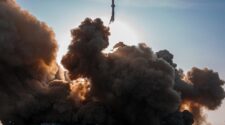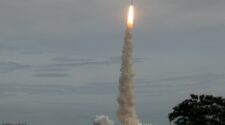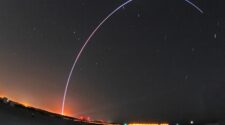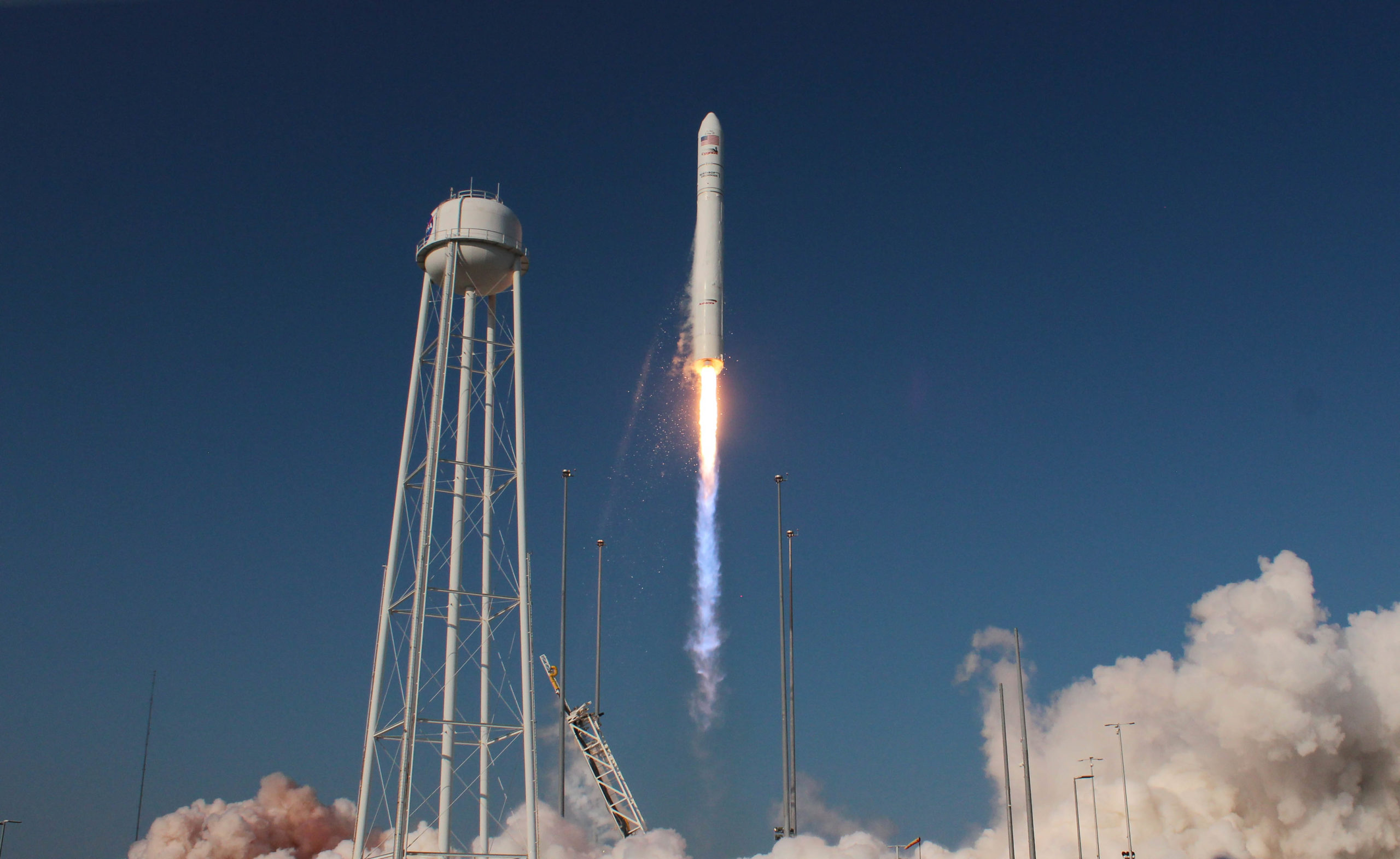
Northrop Grumman successfully launched its 16th resupply mission to the International Space Station from Pad 0A of the Mid-Atlantic Regional Spaceport (MARS) in Wallops Island, Virginia on August 10, 2021, at 6:01:05 p.m. EDT.
The NG16 mission will deliver approximately 8,200 pounds of cargo to the station including crew supplies, hardware, and scientific research once it is docked to the orbiting outpost’s Nadir, or Earth-facing, berthing port on the space station’s Unity module. Docking is scheduled to occur on Thursday, August 12th.
The countdown had a few anomalies, the first was an issue with equipment at the launch pad itself as the pad’s helium system showed low pressure. While the team looked at that issue, the decision was made to move the launch to the end of the five-minute window to allow as much time as they could get to work on the problem. After determining they had a leaky valve in the pad system, the team reset which stabilized the pressure level and it was deemed acceptable to launch.
After the entire team gave their go for launch, the countdown progressed down to just about five minutes when the team rebooted a ground support computer that was not operating properly. The four-minute reboot meant that it would be close to launch time before it came back online, but it made it with time to spare.
The two Russian-built RD-181 engines ignited, and the Antares rocket lifted off right at the end of the launch window.
With blue skies for the launch, the crowds that were gathered around the area could see those twin engines burning almost all the way through Main Engine Cutoff (MECO). Shortly after MECO Stage Separation occurred where the first stage separates from the rest of the launch vehicle, flowed shortly after by fairing separation, which exposes the Cygnus spacecraft to space, and finally interstage separation, then the solid-fueled second stage ignited carrying the Cygnus spacecraft the rest of the way into orbit.
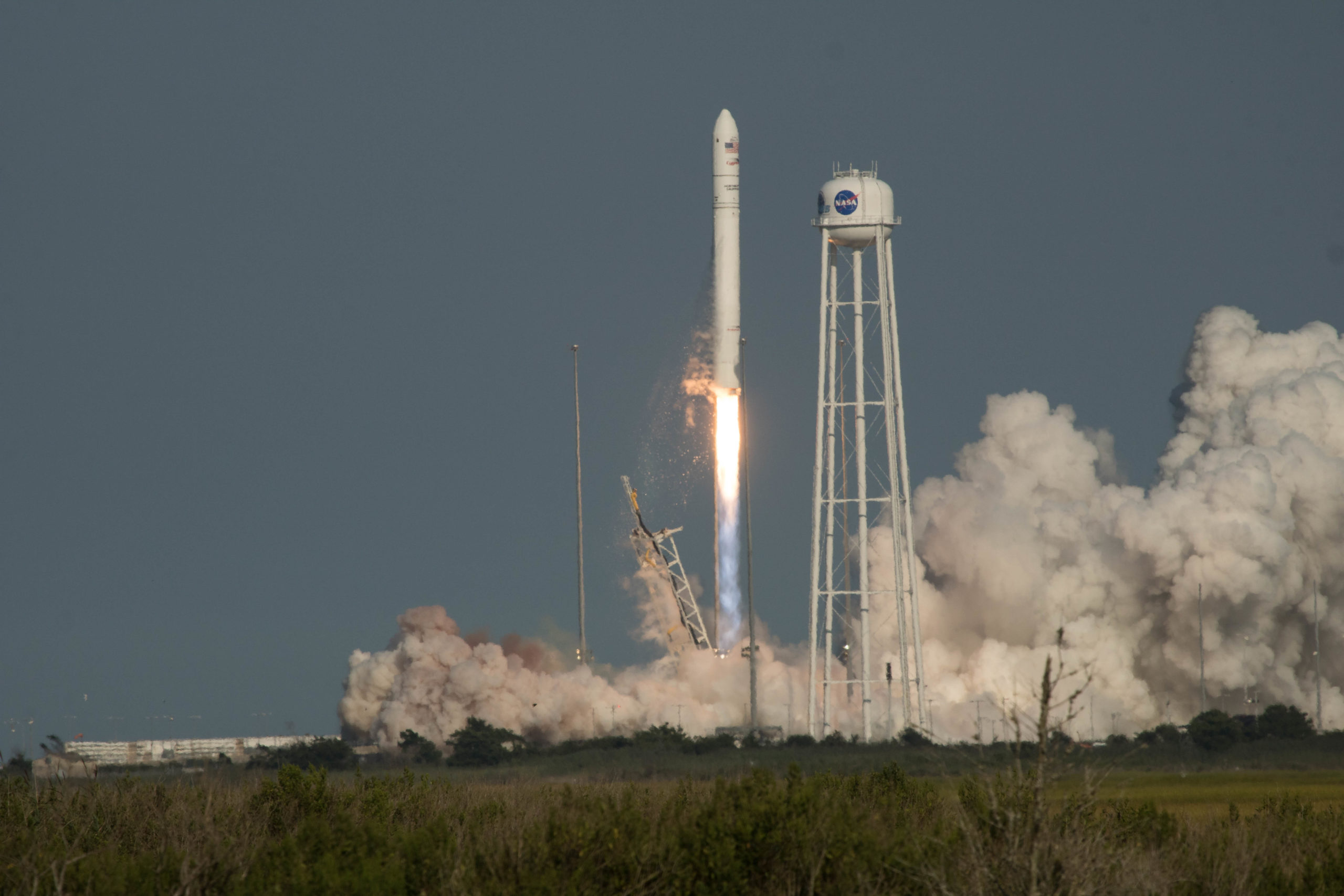
The Cygnus cargo spacecraft, named the S.S. Ellison Onizuka after fallen astronaut Ellison Onizuka whom was NASA’s first Asian-American astronaut, and tragically lost his life when the Space Shuttle Challenger exploded during launch in 1986, will spend the next two days catching up to the space station while lifting its orbit higher by firing its thruster until it matches the orbit of the station.
Once the spacecraft has reached the station, NASA astronaut Megan McArthur will capture it using the Canadarm2 and dock it at the station. Berthing is currently set for Thursday morning around 6:10 a.m. EDT.
Cygnus will spend about three months attached to the station allowing plenty of time for the transfer of all the new cargo as well as loading the spacecraft with items to be discarded which will burn up when Cygnus performs a destructive reentry to end its mission.

